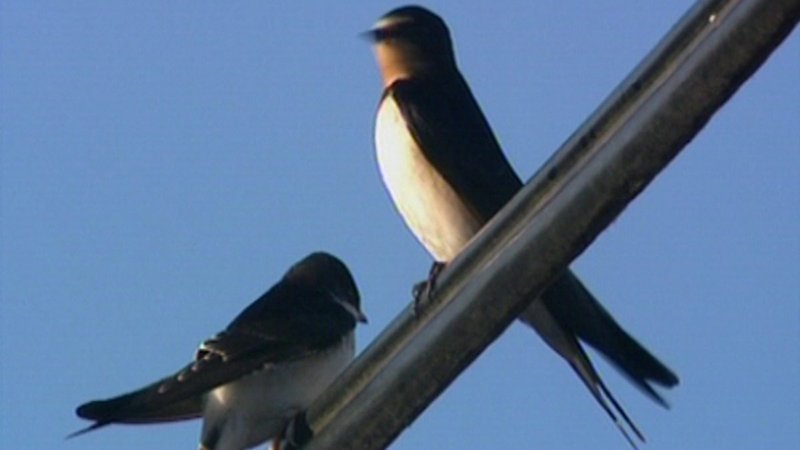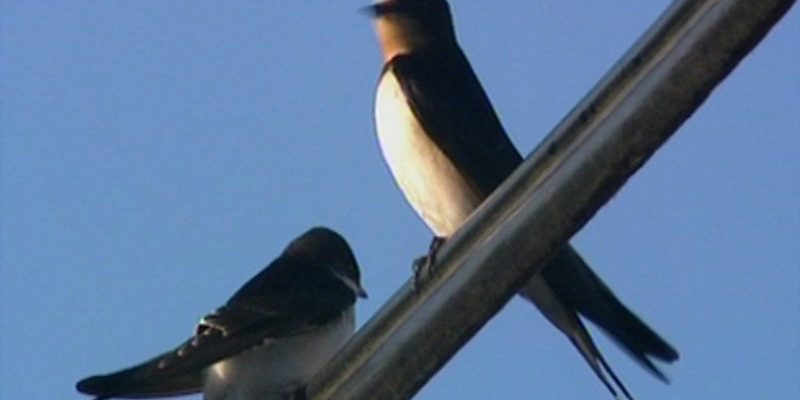
Swallows are fascinating little birds that capture our hearts with their swift aerial acrobatics and charming appearances. Imagine a tiny creature effortlessly soaring through the sky, deftly darting around to catch insects mid-flight. That’s the swallow for you! These birds, known for their graceful movements and beautiful plumage, play an important role in our ecosystems. Their ability to control insect populations makes them vital for agriculture and pest management.
You might be curious about what swallows look like and where they live. Well, they have a slender body, long wings, and a deeply forked tail, which allows them to maneuver with incredible speed. Swallows are typically found in open areas where they can freely glide and hunt for food. They often build their nests near human habitats, taking advantage of our structures for protection.
Physical Characteristics of Swallows
Swallows are small birds, usually measuring around 5 to 8 inches in length. Their wings are long and pointed, enabling them to reach impressive speeds—sometimes up to 40 miles per hour! The coloration of swallows often varies by species, but you can typically expect to see shades of blue, white, and rust. For example, the barn swallow has a stunning navy-blue back, a rusty red throat, and a white belly.
Another interesting feature is the swallow’s strong, slender beak, which is perfect for snapping up flying insects. Their feet are relatively small, which makes them less suited for walking. Instead, their design is all about flying! Their aerodynamic shape not only helps them in their quest for food but also makes them a joy to observe as they swoop and dive.
Key Facts about Swallows
| Size: | 5 to 8 inches long |
| Wingspan: | 12 to 16 inches |
| Habitat: | Open fields, near water, and human structures |
| Diet: | Insects, especially flies and mosquitoes |
| Speed: | Up to 40 miles per hour |
| Lifespan: | 3 to 5 years in the wild |
Habitat and Distribution
You can find swallows in various habitats across the globe. They thrive in open areas where they can easily hunt for insects and find suitable nesting locations. This includes fields, marshes, and even urban settings where buildings mimic the cliffs and caves they naturally prefer for nesting. Swallows are migratory birds, often traveling thousands of miles between breeding and wintering grounds.
The most common species, the barn swallow, breeds in North America, Europe, and Asia, and migrates to Central and South America during the colder months. Their movements are incredibly synchronized, and you can often see them traveling in large flocks, transforming the sky into a flurry of wings.
Behavior and Feeding Habits
Swallows are known for their agile flying abilities. They often hunt in groups, swooping down in a graceful ballet to catch insects. As social birds, they engage in aerial displays during mating season, showcasing their skills and attracting potential partners. Watching a group of swallows fly together is like witnessing a well-rehearsed dance performance.
When it comes to feeding, swallows primarily eat insects. Their diets mainly consist of flies, mosquitoes, and other small flying insects that they catch while in flight. This feeding style is not only fascinating but also beneficial, as it helps control pest populations in agricultural areas. In a way, swallows serve as natural pest control agents, making them valuable to farmers and gardeners alike.
Nesting and Reproduction
Nesting for swallows can be quite an adventure! These birds typically build their nests in sheltered areas such as under eaves, bridges, or cliffs. They use mud and grass to craft their homes, and the nests can be quite sturdy. Interestingly, swallows often return to the same nesting site year after year, showing a remarkable sense of loyalty to their chosen spots.
During the breeding season, swallows can lay anywhere from 3 to 7 eggs, depending on the species. The eggs are usually a pale color, often speckled with brown or gray. Both parents share the responsibility of incubating the eggs, which usually takes about two weeks. Once the chicks hatch, they are fed a diet of regurgitated insects, and they quickly grow strong enough to take their first flight.
Conservation Status
The conservation status of swallows varies by species, but many face challenges due to habitat loss and changing agricultural practices. Urban development can eliminate their nesting sites, while the use of pesticides can reduce the insect populations they rely on for food. Some species, such as the barn swallow, are considered to be of “Least Concern,” but monitoring populations is essential to ensure their survival.
Conservation efforts are in place to help preserve suitable habitats and promote awareness about the importance of these birds. Creating bird-friendly spaces in urban areas and reducing pesticide use are steps we can all take to support swallow populations. By doing so, we not only help swallows thrive but also maintain the delicate balance of our ecosystem.
Interesting Myths and Folklore
Swallows have been a part of human culture for centuries, inspiring myths and storytelling in various societies. In many cultures, these birds are symbols of hope and love. For instance, in ancient sailors’ legends, swallows were believed to guide them home, symbolizing safety and a return to family. Because of this association, swallows often represent loyalty and fidelity.
Another interesting belief is that seeing a swallow can signify the arrival of spring. Their migration patterns and the timing of their return make them harbingers of warmer weather and new beginnings. This connection to seasonal change has made them endearing figures in literature and folklore, often seen as messengers of renewal.
Swallows are not just beautiful birds; they are vital members of our ecosystem. Their remarkable flying abilities, social interactions, and role in pest control make them a delight to observe. Understanding more about swallows can deepen our appreciation for these little creatures and encourage us to contribute to their conservation.
FAQ
What do swallows eat?
Swallows primarily feed on insects, especially flies and mosquitoes. They catch their prey in mid-air using their agile flying skills, which makes them quite efficient hunters. This diet helps them thrive in various habitats, especially those associated with human activity where insects are more abundant.
Are swallows migratory birds?
Yes, swallows are migratory birds. They typically migrate from their breeding grounds in North America, Europe, and Asia to warmer regions in Central and South America during the winter months. This journey can span thousands of miles, showcasing their incredible endurance and navigational skills.
How long do swallows live?
In the wild, swallows generally live around 3 to 5 years. However, some individuals can live longer if they avoid predators and find enough food. Factors such as habitat quality and environmental conditions can influence their lifespan significantly.
What types of swallows are there?
There are several species of swallows, with some of the most common being the barn swallow, tree swallow, and cliff swallow. Each species has its unique characteristics and habitats, but all share similar features, like their slender bodies and impressive flying abilities.
How do swallows build their nests?
Swallows build their nests using a mixture of mud and grass. They often choose sheltered spots like under eaves or bridges, returning to the same locations annually. The construction process involves collecting mud and materials, which they skillfully mold into a cup shape for their young.
Can swallows be found in urban areas?
Yes, swallows are often found in urban environments, where they take advantage of human structures for nesting. Buildings and bridges can provide excellent nesting sites, and their presence in cities helps control insect populations, benefiting both the birds and the human community.
What sounds do swallows make?
Swallows are known for their cheerful chirping and twittering sounds. Their vocalizations are often heard during the breeding season and serve as communication between mates or in social interactions within flocks. These sounds add to the charm of watching them fly around.
How can I attract swallows to my garden?
To attract swallows to your garden, consider providing a suitable nesting site. Installing a swallow nest box can encourage them to settle nearby. Additionally, maintaining a healthy insect population—by avoiding pesticides and creating a diverse garden—will make your space more appealing to these beneficial birds.
Do swallows have any natural predators?
Yes, swallows face several natural predators, including birds of prey like hawks and kestrels. Additionally, snakes and some mammals may target their nests, especially when they are vulnerable. However, swallows’ agile flying skills help them evade many potential threats.

